It is almost a year from now when Typhoon Haiyan, the strongest tropical storm ever recorded in the history of mankind, made landfall in the Philippines.
We all knew how strong it was going to hit us.
We were told by the government offices and media about the maximum wind speed, rainfall, and “storm surge” it could bring but we have no idea of what the typhoon was about to do to our brothers and sisters in Western Visayas and nearby areas.
When it finally passed the Philippine area of responsibility, we were all faced with the grim truth; Typhoon Yolanda, as it is called in our country, claimed many lives, left a lot injured, hungry, and emotionally torn to pieces.
The aftermath was called by The Guardian as “the horror that unfolded day by day” but for me, it seemed that those directly affected with the wrath of the cyclone experienced horror that unfolded every second and every minute of their new lives.
The day after the storm, there wasn’t much we could really do for the survivors except supply them with food, clothing and shelter.
After seeking safety and making sure that basic needs are met, survivors turn to technology through cellphones and mobile internet to reunite with loved ones or inform other family members elsewhere in the Philippines that they made it through the ordeal.
It was then the challenging task of journalists and concerned citizens to report the truth of what really happened on that dreadful November morning.
Last September 19 and 20, 2014, Rappler, Microsoft, and Global Center for Journalism and Democracy teamed up with Globe Telecom to organize PH+SocialGood 2014: Tacloban #2030NOW.
Speakers of various backgrounds, hailing from all parts of the world, converged in Tacloban City.
The summit tackled issues regarding journalism, technology, democracy, bureaucracy, post-disaster corruption, recovery, and empowerment.
Maria Ressa, CEO and Executive Editor of Rappler, was the keynote speaker of the first day.
She told the story on how Rappler started out with 12 employees to the company it is today.
According to Ressa, 3 things contributed to their growth as a company; professional journalism, technology, creativity and the wisdom of the crowd.
The participants were also introduced to the mood navigator, which shows how the crowd feels about a certain news or topic.
To effectively stand against corruption, one must “draw a line in which one side is good and one side is evil,” Ressa concluded.
Kelli Arena, Executive Director of Global Center for Journalism and Democracy, emphasized the importance of empowering journalists by asking the cooperation of local government units and non-government organizations.
According to Arena, “Journalism is an incredibly powerful tool.”
Her hopes for 2030 is for journalism to best serve the public by building credibility, maintaining accuracy, and always seeking facts.
If you think that journalism is easy, think again.
There was a time in Rick Dunham’s life when he had to use pencil and paper to write his article.
To submit his article, he had to make use of the only thing that was available, a working land line phone.
He dictated his story to his coworker.
That’s how one of his articles were published in his previous job.
Dunham is also highly-praised for his online coverage about hurricanes.
Dunham couldn’t agree more that the best way to execute a disaster coverage is to plan ahead of time.
Reporters or concerned citizens should determine what skills, knowledge, and tools are needed when natural disaster strikes and what kind of information or stories the public should be provided before, during, and after a disaster.
After a disaster, there is an immediate need for fast response and rehabilitation in order to quickly rebuild lives.
For Bill Dorman, democracy’s viability is threatened with the presence of corruption in the government.
When there is bureaucracy, there is a delay in the process of rehabilitation.
What can journalists do?
They can expose corruption and push for accountability and transparency within ethical bounds.
“When you follow the money, you can get the story,” Dorman shared.
Kris Van Orsdel opened my eyes to the reality of politics.
We all know that bureaucracy is present in the Philippines but most of us have no idea that the big US of A is also affected by it.
Orsdel explained the major role of politics and politicians in affecting the post-disaster recovery and rehabilitation of a nation.
Apparently, politics stands in the way of speedy response to the affected population.
Just think about Tacloban City and all the shenanigans we had to hear on television, radio, and internet.
Some of the strategies implemented by the government and the way they were implemented frequently made my eyeballs roll.
You may feel alone in your chosen advocacy, but one person can serve as a spark to bring forth light and illumination.
That’s what Shahira Amin proved to us.
One fiery spark of courage can lead to a revolution.
There is a fine line between journalism and activism and she dared to tread it.
One day in her life, she was torn between reporting something she was told to report or report the truth to her fellowmen.
She made a decision and exposed the ongoing riot between civilians and military.
That act inspired many civilians to help their country in any way possible.
According to Amin, the people started harnessing the power of social media to tell the world what really happened because the government-controlled media wasn’t reporting the truth anymore.
Amin admits that she is an activist journalist and to become a good journalist, one must “observe and report what he sees.”
A responsible journalist also inculcate the code of ethics by being truthful, accurate, objective, fair, and impartial.
“A story has 15 sides or more,” said Amin.
When asked on how she can still continue to work even if her chosen profession puts her life at stake, she enthused, “If you have no passion, go find a 9-5 job.”
As the last speaker of the day, Len Manriquez of Pecojon Philippines shared the reality of journalism in the Philippines.
Little did I know that journalists in far areas of our country only receive a small amount of pay to publish a single article and little did I know that they are not equipped with the best technology one can hope for.
To make up for what is lacking, journalists improvised and fueled themselves with the burning urge to provide “public service.”
Manriquez also showed us how to empower journalists.
One way of doing it is to increase their pay and provide technological advancement to extend their reach to the most number of people in their area as possible.
The second day brought in a much bigger crowd.

Governor Leopoldo Dominico Petilla (L) and Mayor Alfred Romualdez (R) answered some questions from the participants.
Thanks to modern technology, the entire event can be seen through live stream.
It was also live-blogged and live-tweeted by participants.
How cool was that?
So no matter where you were in the world that day, you join the spirit of Social Good Summit through the comforts of your beloved laptop or tablet.
Thanks to Rappler, we can review the videos and re-listen to the thoughts imparted by the speakers.
After watching the videos of day 2 and remembering the thoughts shared on day 1, I can finally formulate opinions on how technology and journalism can help us Filipinos in whatever disaster.
- For me, technology is very important in connecting people. To check if other family members are okay after a disaster, people make use of mobile technology to make a call or send text. Sometimes, they make use of internet connection and connect with friends, relatives, or family members through various social media platforms. “Telecommunications is a vital component of disaster risk reduction and management, thus, Globe continuously works on ways to limit the impact of any disruption in its operations especially during calamities. It has a business continuity management policy in place which prioritizes the safety of the people and ensures the delivery of products and services even during disasters,” shared Miss Yolly Crisanto, Globe Corporate Communications Senior Vice President. Thanks to Globe’s dedicated technical staff like Mr. Roel Rivera, Jerome Cañete, and Roger Gadaingan, mobile signal was made available in downtown Tacloban 2 days after Yolanda struck the island.

Roger Gadaingan told us that together with his workmates, they walked for many kilometers and manually hauled a 90-kilo equipment to make the cell site operational.

Jerome Cañete can still remember how Typhoon Yolanda destroyed their house. After making sure that his family was secure, he immediately went back to work and salvaged equipment from one site to the other.

Just like Mr. Cañete, Roel Rivera prioritized his family and kept them safe. After that, he started looking for resources to establish communication and report to Cebu command center. Temporary fiber connection was established 3 days after Typhoon Yolanda hit Leyte, The restored coverage was wide and enabled people to start calling loved ones or charge their phones.
- The technology used by media is also important in timely distribution of information. Cameras, satellite broadcast vans, radio transmitters, and etc make it possible for us to know what’s happening in a specific area in the world at a touch of a button.
- On the part of journalists, they are basically the lifeblood of public information. Without whom, no information could ever be obtained nor ever be shared. Journalists, either professionals or a concerned citizens, expose the truth, expose what’s needed to be done, and expose the who’s who in specific crisis.
- From the data collected by journalists and the “wisdom of the crowd,” the government and non-government organizations can start formulating decisions and plan to implement immediate distribution of basic goods and facilitate post-disaster recovery and rehabilitation as soon as possible.
- From all the lessons we learned from Typhoon Haiyan, we can re-implement the strategies that worked whenever a natural or man-made disaster will soon arise. This means that the public and the government has to work hand in hand again to make way for a speedy recovery.

The ruins just beside the summit area gave me a small glimpse on how bad Tacloban City was hit by Typhoon Yolanda.
How about you?
In your opinion, how can technology and journalism help is us during disasters?
I would love to hear what you can say.
Feel free to share this “social good” story to your family and friends and feel free hit the comment section below.

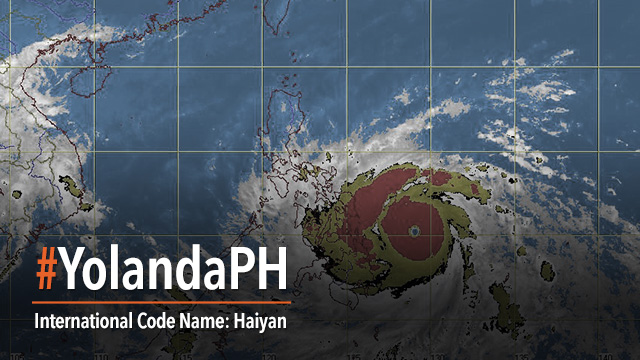
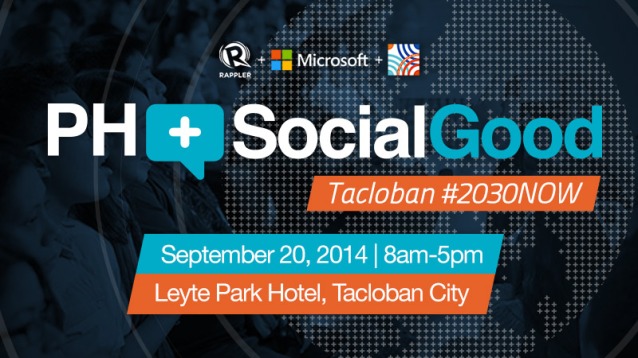
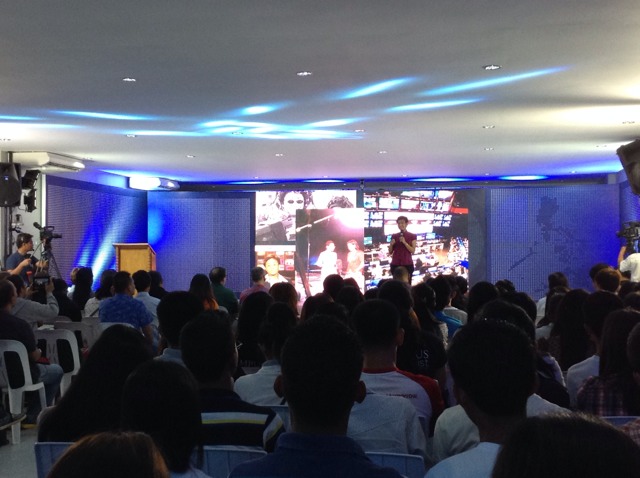

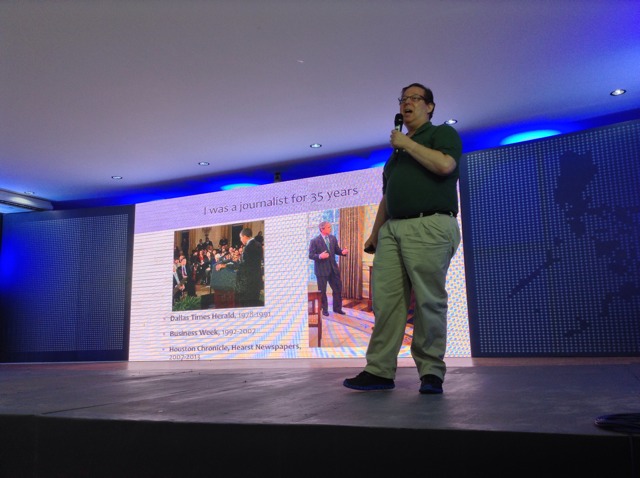


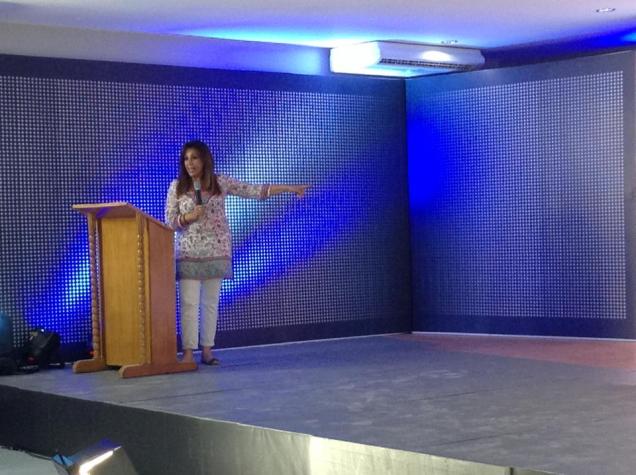
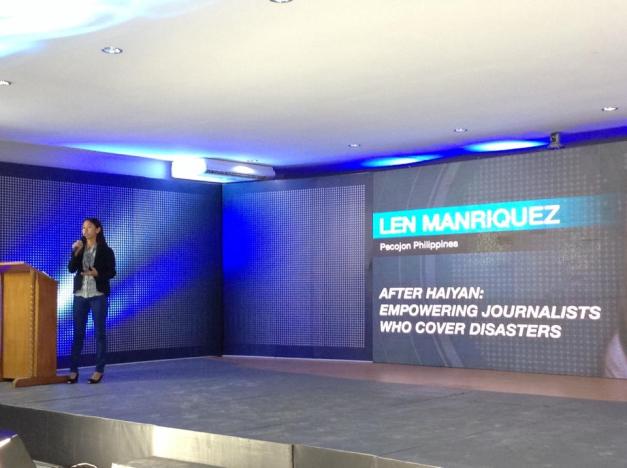

Agree that being ethical is vital in this (journalism) field. Thanks for the reminder!
LikeLike
Thank you very much OY HZ! ^_^
LikeLike
All of us must contribute for a program like this and to sustain its mission.
LikeLike
I agree with you Sir Fernando. Their programs need the cooperation of every willing citizen to sustain its goals. ^_^
LikeLike
I’ve always believed in the power of journalism. Combined with the latest technology, there is a lot more that journalism can do for the good of society. This really looks like a wonderful event. I wish I could have been there.
LikeLike
It was a great event Janice. I was able to see how the people of Tacloban rose from the ashes of devastation. It was also nice to know that a lot of Filipinos and foreigners extended a helping hand. ^_^
LikeLike
That was an extremely emotional day for our family. We met Mayor Alfred when we visited our church in Tacloban a few years before Haiyan struck. Our Tacloban pastor and his wife and kids were trapped in their home but thankfully survived that fateful day. I’m sad at the response of many people in authority towards the people of Tacloban. I took up Communication and Journalism was one of the courses I trained for….and it is anything BUT what I sadly witnessed during the aftermath. I hope that many will reach your post and be convicted.
LikeLike
I am deeply saddened by your experience Miss May. I hope a lot of Filipinos, especially the ones with position and power, have learned a great deal with how Yolanda affected everyone and I hope they will apply what they learned in creating a better society and enable Filipinos to become resilient. I am so glad that the pastor and his family survived. With regards to convicting people, I am not sure it will happen in the near future. Maybe, it will just turn out as something “na ibaon sa limot.” You know how politics works here in our country. It’s a sad sad fact but I am hopeful that it’ll change someday. Hopefully the change will happen in our lifetime. ^_^
LikeLike
Technology can really make the transfer of information faster and in case of calamities that can mean a lot.
LikeLike
I agree with you franckxethee. During Yolanda, Facebook was very useful in determining who survived Yolanda. ^_^
LikeLike
I guess having the news arrive on the spot can really save lives like it did Yolanda. It can also highlight problems faster.
LikeLike
I salute to all journalists who says what really happens to the Philippines when Typhoon Yolanda is in this country and also to all people who are concerned about this.
LikeLike
My answer is a big yes. Actually, my sister and her thesis team developed a disaster management system for a local government / community in Manila. This is to help volunteers keep track of their inventory for killing fire, boats during flooding and financial resources from donations to those in need.
LikeLike
Social media by journalism can really change everything. It gives people awareness around the world. Look how many countries and people helped
LikeLike
Great event.. thanks to the technology for making information accessible to many and to the journalist who made their share.
LikeLike
This is good news! Let’s use the technology for good.
LikeLike
The power of journalism and technology! Way to go!!
LikeLike
Technology should entail responsibility and it must be used appropriately in times of crisis.
LikeLike